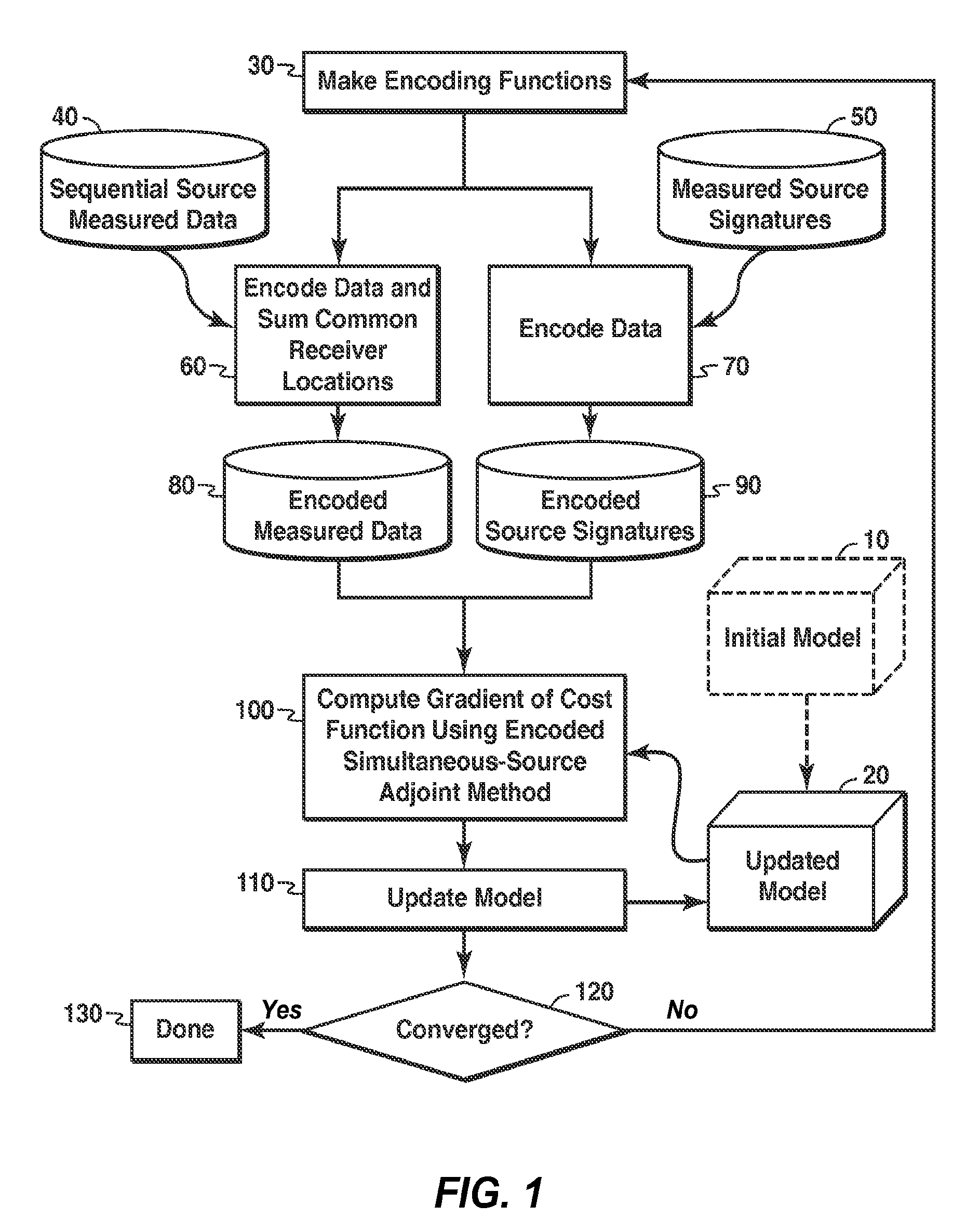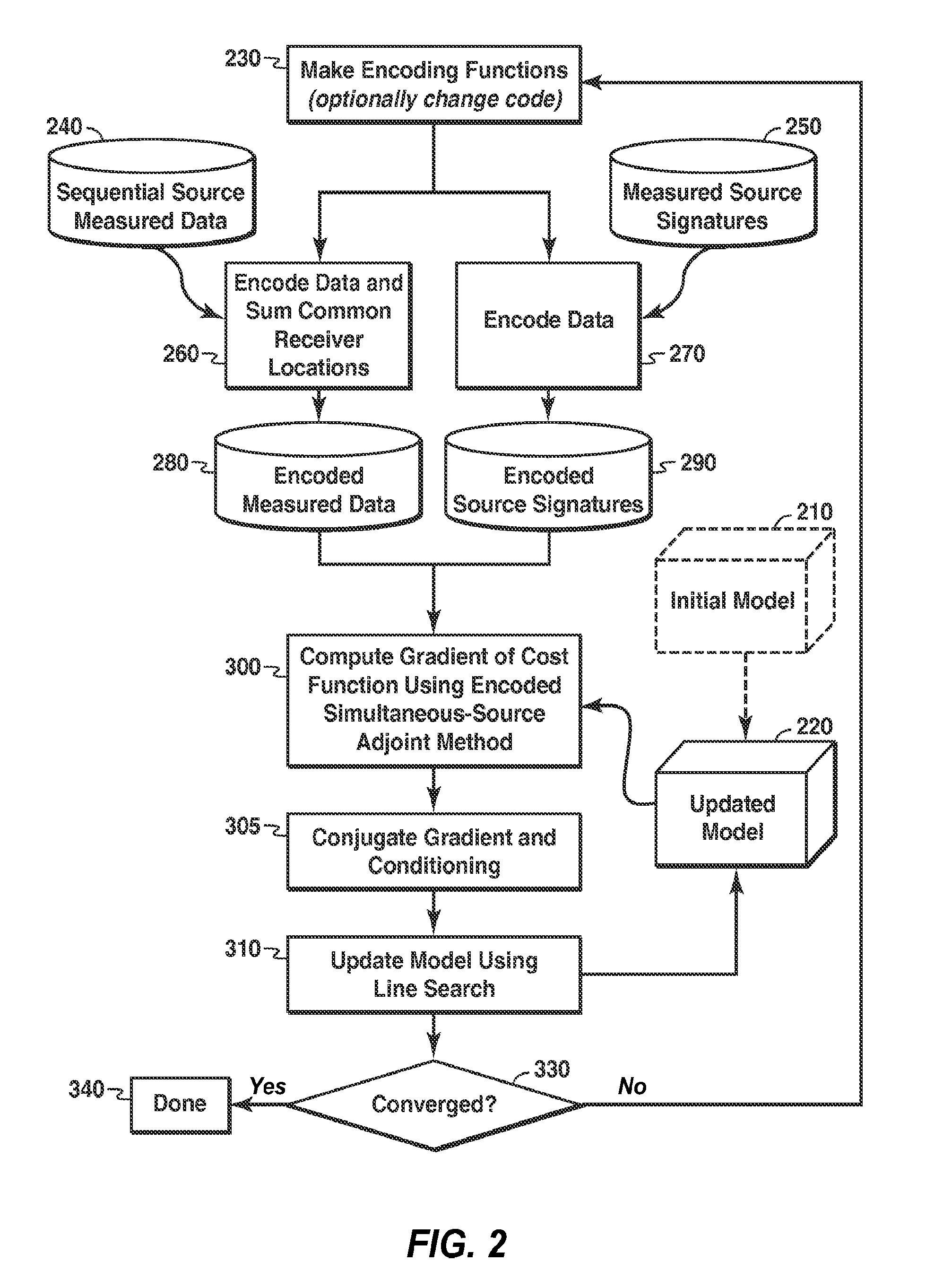Efficient Method For Inversion of Geophysical Data
a geophysical data and geophysical data technology, applied in the field of geophysical prospecting, can solve the problems of inability to apply it to many problems of interest, high computational cost of iterative inversion, and inability to accurately measure the degree of misfit of the cost function
- Summary
- Abstract
- Description
- Claims
- Application Information
AI Technical Summary
Benefits of technology
Problems solved by technology
Method used
Image
Examples
example
[0093]FIGS. 3 to 9 present a synthetic example of inverting constant-density acoustic seismic data using this invention and for comparison with the conventional sequential source method. For this example the embodiment described in FIG. 2 was used excepting that step 305 was eliminated. Inclusion of step 305 improves the results relative to this example, so this is a conservative example of the advantages of this invention.
[0094]FIG. 3 is the base velocity model used to generate the measured data (FIG. 4) for this example. A successful inversion of the measured data simulated from this model should look like a band-limited version of FIG. 3.
[0095]FIG. 4 shows one source gather of measured data simulated from the model in FIG. 3. A total of 128 sources were simulated (of which FIG. 4 is the first) with the sources positioned near the surface of the model and spread out evenly across the model. 1024 seismic receivers were also spread out evenly across the model. The same set of receiv...
PUM
 Login to View More
Login to View More Abstract
Description
Claims
Application Information
 Login to View More
Login to View More - R&D
- Intellectual Property
- Life Sciences
- Materials
- Tech Scout
- Unparalleled Data Quality
- Higher Quality Content
- 60% Fewer Hallucinations
Browse by: Latest US Patents, China's latest patents, Technical Efficacy Thesaurus, Application Domain, Technology Topic, Popular Technical Reports.
© 2025 PatSnap. All rights reserved.Legal|Privacy policy|Modern Slavery Act Transparency Statement|Sitemap|About US| Contact US: help@patsnap.com



